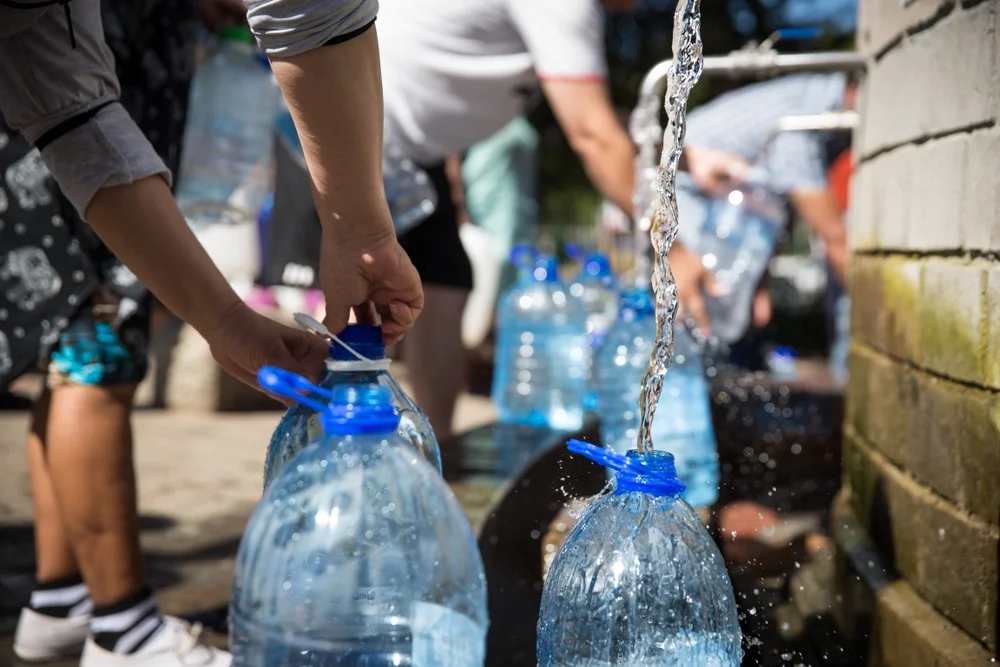Combating Water Wars: What It Means To Manage Our Supply With Blockchain
When you start talking about water usage, you realize the significant complexity of the subject.
Water covers about 70% of the planet. Yet less than 3% of it is drinkable freshwater. And only about 1% of that freshwater is easily accessible to humans.
While many people in the U.S. don’t think twice about turning on the taps, other areas of the world — and the country — are not so lucky.
Water isn’t just seen as a basic human need. It’s also viewed as a commercial necessity and a commodity to be bought and sold, which leads to conflicts and debates about how best to use this valuable resource.
And as water scarcity increases, a system will need to be developed in order to keep track of water usage and rights.
There are plenty of challenges when it comes to tracking water and incentivizing players to work towards the benefit of the population as a whole. However, it’s more and more likely that blockchain will be a key player in creating a sustainable system of water use.
Tracking water begins with understanding the challenges.
Water is a basic human need. But when that need runs up against the demands of a large population, agricultural interests, and industrial uses, the decisions about who can access it become murky.
The much-lauded film Water & Power: A California Heist documented some of the challenges that face governments and landowners trying to control and regulate the flow of fresh water. It shows how a few powerful land-owning interests were able to divert water to their advantage — but to the detriment of several towns — throughout the state of California.
Questionable deals involving water supplies are not isolated incidents. Nestlehas a well-documented history of profiting off water it provides to people in countries where its availability is scarce.
Corporate decisions, poor policy and severe drought all test society’s ability to provide fresh water.
For example, in Cape Town, South Africa, residents are on the verge of running out of water. People may soon be limited to 6.6 gallons of water, which must be picked up from distribution centers around the city. (To compare, the average American uses 60–80 gallons per day).
And by 2025, two-thirds of the world’s population may face water shortages.
The solutions to the water crises are complex, and they involve an amalgam of many different participants — from individual users to multi-national corporations.
Once you know the challenges, it’s about utilizing the right incentives.
This is not an issue that will go away without buy-in from the many people who help develop, control, and sustain fresh water sources around the globe.
Infrastructure leaders, governments and corporations all need to come together around this problem to make long-term water sustainability a reality. The issue is that each player has their own incentives for managing the water supply.
Some companies are already working to solve water issues. But ultimately, corporate responsibility may stem from a combination of public demand, tax breaks, or even additional, carbon-style taxes aimed at reducing the waste or pollution of water.
Infrastructure leaders also have an important role to play. The way nations build and design new infrastructure will have a massive effect on water distribution and consumption in the future.
Governments, too, will need to rise to the occasion and work to solve these issues. Often, legislative action is necessary to enforce changes in how people use and conserve water. The taxes, infrastructure plans and new initiatives have to be implemented by elected leaders.
A blockchain system can help solve challenges and enforce incentives.
Blockchain can’t yet track the flow of water. But it can increase efficiency, reduce costs and evolve how physical commodities like water are distributed.
Governments around the world are already considering how blockchain can be used to create smart cities that efficiently distribute utilities. The city of Fremantle, Australia is currently gearing up to experiment with a blockchain-based system for energy and water distribution. The goal is a resilient, inexpensive and energy efficient system running on a blockchain.
Meanwhile, Melbourne, Australia has already partnered with the startup Civic Ledger to utilize a blockchain-based application designed to improve the water trading market in Australia.
And cities aren’t the only entities using blockchain to solve issues in the water supply.
Genesis Research & Technology Group has created a new water purification system for the wastewater collected after oil and gas drilling. They’re building an IoT water quality sensor that will be able to store water quality records on the Ethereum blockchain. Their goals are to make the wastewater usable again and reduce the energy needed to transport the water to storage sites.
All of these efforts revolve around using blockchain to increase the speed and efficiency of the projects. This saves time and money, and makes it feasible for governments and corporations to follow through on proposed solutions.
Follow through is essential, because the only way to manage our water supply is by encouraging cooperation among the many players with a stake in the way people use the most precious resource on earth.
This article originally appeared on Forbes.com.
Thanks for reading!
Follow me on Twitter and Quora for more insights on blockchain technology.

